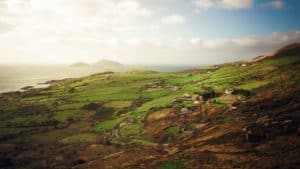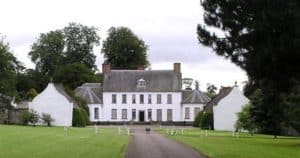The Andean Condor: Emblem of Heritage and the Quest for Preservation

Updated On: April 17, 2024 by Eman Sameh
The Andean Condor, or Vultur Gryphus, is one of the most emblematic birds in South America. It is revered for its ecological significance and cultural symbolism across numerous Andean nations. Esteemed for its majestic wingspan—among the largest of any bird—this species commands the sky with its effortless flight. The Andean Condor is ingrained in the folklore and mythology of Andean culture, where it is often associated with the divine and considered a symbol of power and freedom.

Conservation of the Andean Condor has become a focal issue in recent years due to various threats impacting its survival. Habitat loss, lead poisoning from spent ammunition, and other human-induced factors have led to a vulnerable status for this species. Dedicated efforts by conservationists, in partnership with local communities and indigenous groups, are crucial for safeguarding the Andean Condor’s future. These endeavours not only aim to protect the condor but also to preserve the natural balance in the ecosystems they inhabit and the cultural heritage they represent.
The Legacy of Andean Condors

We begin our exploration of the Andean Condor’s legacy by acknowledging its profound significance across many facets of South American culture. This majestic bird encapsulates spiritual, cultural, and national importance that resonates deeply with Indigenous Andean cultures.
Cultural Significance
The Andean Condor is a spiritual leader among the indigenous peoples of the Andes. To them, it is more than just a bird; it is a sacred creature that symbolises the sky’s power and the freedom to roam the vast expanse of the mountains. It is woven intricately into the fabric of their daily lives, from folklore to religious ceremonies, embodying the bridge between the earth and the heavens.
The Condor in Mythology
In mythology, the Andean Condor serves as a totemic animal, often representing the sun deity and associated with life and fertility. It is frequently depicted in the art and folklore of the Andean civilizations, revealing its role as a key player in mythological narratives and as a potent symbol of rebirth and longevity.
National Symbols and Emblems
As a national symbol, the condor has been embraced in several South American countries. Notably, it graces the coats of arms of Bolivia, Chile, Colombia, and Ecuador, flying as a national emblem that signifies strength and resilience. The image of the condor is also present on currency, public monuments, and other emblems throughout the region, further cementing its status as a symbol of national identity and pride.
Biological Profile

In this section, we’ll dive into the Andean Condor’s classification in the animal kingdom, its notable physical attributes, and its unique behaviours in the wild.
Taxonomy and Classification
The Andean Condor (Vultur gryphus) is classified within the family Cathartidae, commonly known as the New World vultures. Unlike the Old World vultures of Europe, Asia, and Africa, New World vultures are not closely related to eagles and hawks but share a common ancestor seen in their similar feeding habits. The generic name Vultur is derived from the Latin term for vulture, while gryphus originates from Greek mythology, alluding to the bird’s majestic and mythical presence.
Physical Characteristics
The Andean Condor is revered as one of the largest birds of prey. Its impressive wingspan can reach up to 3.3 metres, aiding its ability to soar elegantly with minimal flapping. Males are generally larger and exhibit sexual dimorphism, with a distinctive wattle and large crest on the head, setting them apart from females. This carrion bird’s plumage is primarily black, with a white collar of feathers around the neck and, in males, white patches on the wings.
Behavioural Ecology
As a scavenger, the Andean Condor plays a vital ecological role by feeding on carrion, thus preventing the spread of disease. It uses thermal currents to ascend to high altitudes, where it can glide effortlessly while scanning the land for food. In terms of temperature regulation, the condor’s featherless head is believed to be an adaptation that helps maintain hygiene while feeding on carcasses. Their social structure is complex, involving communal roosting and a hierarchy that dictates feeding order.
Habitat and Distribution

The Andean Condor’s domain stretches across South America, encompassing a range of habitats from coastal regions to mountainous terrains. Understanding where these birds live and the ecosystems they depend on is crucial for their conservation.
Region-Specific Habitats
The Andean Condor is found in diverse locales, particularly in countries such as Bolivia, Chile, Colombia, Ecuador, and Peru. In southern parts of South America, Patagonia is a key region where these birds can be spotted soaring high above rocky shorelines and open grasslands. Each area offers specific natural resources that condors use for roosting, foraging, and nesting.
Andean Ecosystems
Predominantly, Andean condors inhabit the Andean ecosystems, living at altitudes that range typically from 3,000 to 5,000 meters. Within these ecosystems, they rely on thermal updrafts to glide and search for food. The availability of carrion and safe roosting places largely influence the condor’s habitat selection. Activity-specific habitat selection is observed as these birds exhibit different preferences for nesting and foraging zones. Spatial prioritisation models are used by conservationists to identify and protect key habitats within these ecosystems, especially those areas facing habitat loss. Preserving these ecosystems benefits the condors and the myriad of other species that share their home.
Threats to Survival

As we examine the situation of the Andean condor, it’s imperative to focus on the predominant threats these birds face, particularly human-induced dangers and natural challenges.
Human-Induced Dangers
Anthropogenic threats are significant factors contributing to the vulnerability of the Andean condor. One such human threat is lead poisoning, a direct consequence of the birds scavenging on carcasses that have been shot with lead bullets. The ingestion of these toxic particles can be fatal. Due to land development and the placement of power lines, habitat destruction also poses severe risks to condors by reducing their natural habitat and causing collision fatalities. Moreover, the use of poison bait intended for other predators indiscriminately impacts condor populations, as noted in Northern South America, where this practice has critically reduced their numbers (Anthropogenic threats to the Vulnerable Andean Condor in Northern South).
Natural Challenges
Aside from human influence, environmental covariates also add to the natural (challenges) the Andean condor faces. These birds are suited to their specific habitats, and any alteration in climate or food availability can substantially affect their capacity to thrive. While less documented than human threats, these natural challenges further compound the precarious status of these magnificent creatures, underlining the importance of broad conservation efforts.
Conservation Efforts

In securing a future for the Andean condor, concerted conservation initiatives are essential. These initiatives range from international cooperative programmes to legal frameworks aimed at protecting the species.
Conservation Programmes
The Andean Condor Conservation Program (PCCA) operates in South America with the goal of reversing the decline of the Andean condor. Over the last thirty years, this programme has been pivotal in rescuing and rehabilitating numerous condors, with an impressive record of over 370 individual birds — a significant percentage of the remaining population. Various organisations also work towards the captive breeding of condors as a method to increase numbers. This approach mirrors the successful captive breeding programmes of the California Condor in North America.
Key Elements of the Conservation Programmes
- Captive breeding and reintroduction to the wild.
- Ongoing monitoring via GPS telemetry to track condor movements and ensure their safety.
Legal Protections and Policies
The Andean condor has been classified by the International Union for the Conservation of Nature (IUCN) as a near-threatened species, which has catalysed legal protections across its range. These policies often encapsulate ecosystem services that condors provide, such as their role in the ecological cycle as scavengers, which is crucial to maintaining the environment’s health.
Examples of Legal Protections
- The inclusion of CITES (Convention on International Trade in Endangered Species of Wild Fauna and Flora) Appendix I forbids international trade.
- National laws in countries like Colombia, Ecuador, and Peru that prohibit hunting and capture.
Through these efforts, we aim to establish a socially optimal environmental policy that safeguards the condor’s future and recognises its emblematic value and ecological importance to South America’s highlands and culture.
Challenges in Conservation
As we examine the plight of the Andean condor, certain obstacles stand out, particularly pertaining to socio-economic factors and the logistics of scientific research. These issues play a pivotal role in the effectiveness of conservation efforts.
Economic and Social Barriers
South America’s economic and social landscape can directly affect the conservation of the Andean condor. Cultural appreciation for the species, exemplified by events such as National Andean Condor Day, does bolster conservation efforts, providing a non-market economic valuation of the bird. Yet, despite its emblematic status, the willingness to pay for its preservation isn’t uniform across different socio-economic groups.
Urban populations might recognise the condor’s symbolism but may be disconnected from the direct impact of its conservation. Conversely, rural communities, which often directly interact with condors, might face socioeconomic challenges that limit their capacity to engage in biodiversity conservation. Policymakers struggle to balance these issues with the economic value of land, which could otherwise be used for development, creating tension between the needs of people – in terms of income and wellbeing – and the commitment to preserve natural habitats.
Scientific and Research Limitations
The rigour of our scientific understanding is foundational to effective conservation. However, in the case of the Andean condor, several limitations hinder our progress. Research is often constrained by funding, which impacts the scale and depth of studies pertaining to the condor’s ecology and the efficacy of conservation strategies.
Further complicating matters is the Andean condor’s extensive range, spanning multiple national borders and diverse ecological zones. This necessitates multinational cooperation, a challenging prospect when diverse legislation and varying levels of scientific infrastructure exist. With limited data, especially on the condor’s intricate social structures and long-range movements, creating impactful and targeted conservation strategies is challenging for us as conservationists.
Community and Indigenous Participation

In our effort to safeguard the Andean condor, we acknowledge the pivotal roles of local communities and indigenous peoples. Their contributions are instrumental for both conservation and the continuance of cultural heritage, particularly within the Andes region, where the condor holds significant symbolic value.
Community Engagement
We actively engage with Patagonian villagers and various communities in South America to bolster efforts to protect the Andean condor. These community-driven projects aim to increase these majestic birds’ population, sustain regional biodiversity, and address critical environmental factors. For instance:
- Community-based monitoring initiatives
- Local education programmes emphasising environmental stewardship
Incorporating Traditional Knowledge
The conservation approach integrates traditional knowledge from indigenous communities, recognising their deep-rooted understanding of ecological systems and biodiversity management.
- Use of indigenous ecological calendars to align conservation activities with natural cycles
- Ethno-biological research contributes to data on condor habitats and behaviours
These practices can be seen as a testament to the reverence for the Andean condor and its status not only as a national symbol but also as a keystone species within local belief systems across Bolivia, Chile, Colombia, and Ecuador.
Global Perspective
Examining the Andean Condor’s situation through a global lens, we recognise the significance of international cooperation and contextual conservation efforts that tackle biological and geopolitical complexities.
International Cooperation
The conservation of the Andean Condor—a national symbol of multiple South American countries—benefits greatly from international efforts. As organisations like the National Geographic Society provide crucial research and documentation, they bridge information gaps and bring global attention to the species’ plight. These global partnerships facilitate the sharing of best practices and successful conservation strategies, ensuring the survival of key habitats across borders.
Condor Conservation in Context
Within the broader scope of conservation, the Andean Condor represents New World Vultures facing similar threats. These birds are an integral part of the Latin American ecosystem, serving an important role in maintaining ecological balance. Conservation strategies often intersect with other sectors, such as energy production, where initiatives like green hydrogen projects present opportunities to blend sustainable practices with wildlife preservation. Our approach posits that protecting the Andean Condor is not only about safeguarding a species but also about respecting the intricate web of life encompassing their habitats.
The Future of the Andean Condor

The fate of the Andean Condor hinges upon the effective implementation of emerging conservation technologies and policies that can navigate the complex path forward.
Emerging Technologies in Conservation
We observe the advancement of scientific knowledge and technology, which is proving instrumental in conserving large avian scavengers like the Andean Condor. GPS-tracking collars are one such advancement. They provide invaluable data on the movement patterns of these mobile species, offering insights into their habitat use and individual variability. These devices enable us to map critical areas for protection and create informed habitat modelling strategies.
Zoological institutions also play a critical role, leveraging their expertise to aid in the recovery of threatened vultures. Through carefully managed breeding programmes and research initiatives, these institutions contribute significantly to bolstering populations in the wild.
Policy and the Path Forward
Concerted policy efforts are imperative to ensure the survival of the Andean Condor. Recognising the importance of these avian scavengers, both regionally and as national symbols, has spurred governments to action. By integrating local perceptions into policy-making and establishing guidelines for land use, we may provide these vultures the sanctuary they require to thrive.
Evidently, the Andean Condor’s future is delicately interwoven with our actions. Our collective resolve to amplify conservation efforts can forge a path where the majestic flight of the Andean Condor persists as a testament to our commitment to preserving the natural heritage of South America.
Frequently Asked Questions
This section explores the most common enquiries about the Andean Condor, a magnificent bird deeply rooted in South American culture and facing conservation challenges.
What does the Andean Condor typically consume?
The Andean Condor is a scavenger, feeding mainly on carcasses of dead animals. As an opportunist, it plays a crucial role in the ecosystem by cleaning up after other predators.
In which habitats can the Andean Condor be found?
Andean Condors inhabit diverse environments, ranging from coastal regions to high mountain areas. They are most commonly associated with the Andes Mountains, where they can be seen soaring overhead.
How does the size of the Andean Condor compare to that of a human?
Male Andean Condors are indeed large, with a body length between 100 and 130 centimetres, making them quite formidable compared to humans.
What is the wingspan of an Andean Condor?
These birds have considerable wingspans, reaching 2.5 to 3.3 metres, which supports their gliding capabilities. This allows them to traverse vast areas without expending much energy.
What is the current conservation status of the Andean Condor?
Currently, the Andean Condor is listed as vulnerable, and its numbers are declining due to habitat loss, poisoning, and hunting, among other threats.
How does the Andean Condor’s symbolism impact the cultures of South America?
The Andean Condor is a potent symbol of freedom and power in South American cultures. It’s revered in folklore and often appears in indigenous art and mythology, underlining its importance to cultural heritage.






